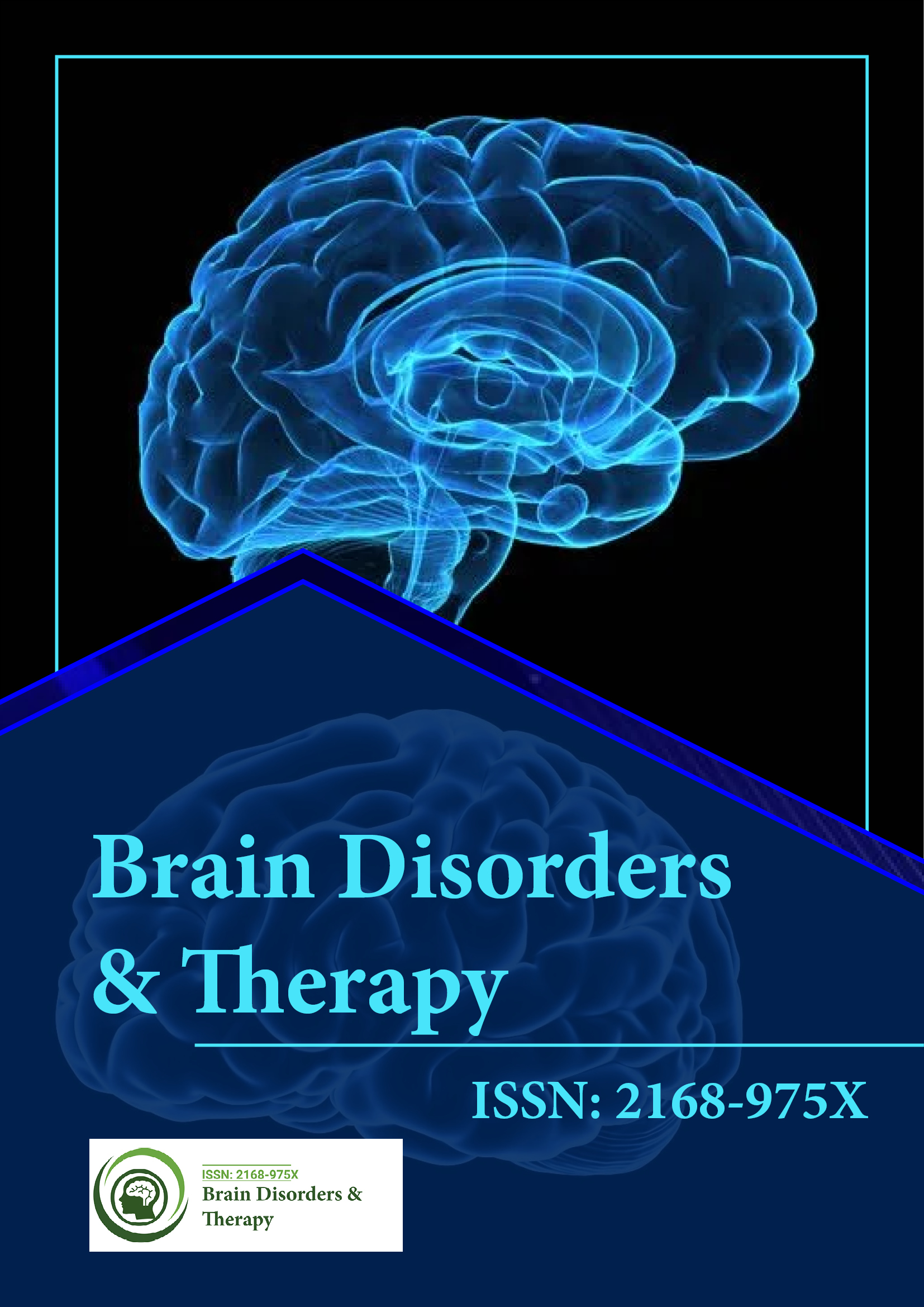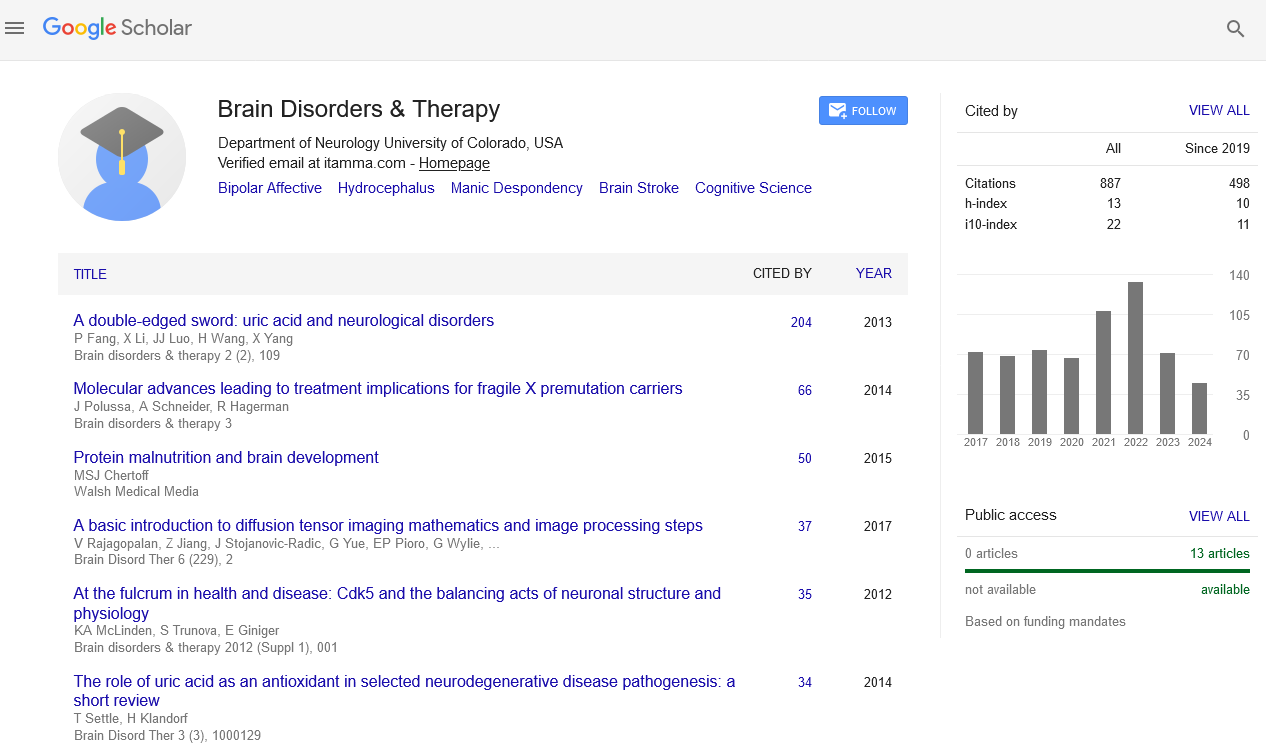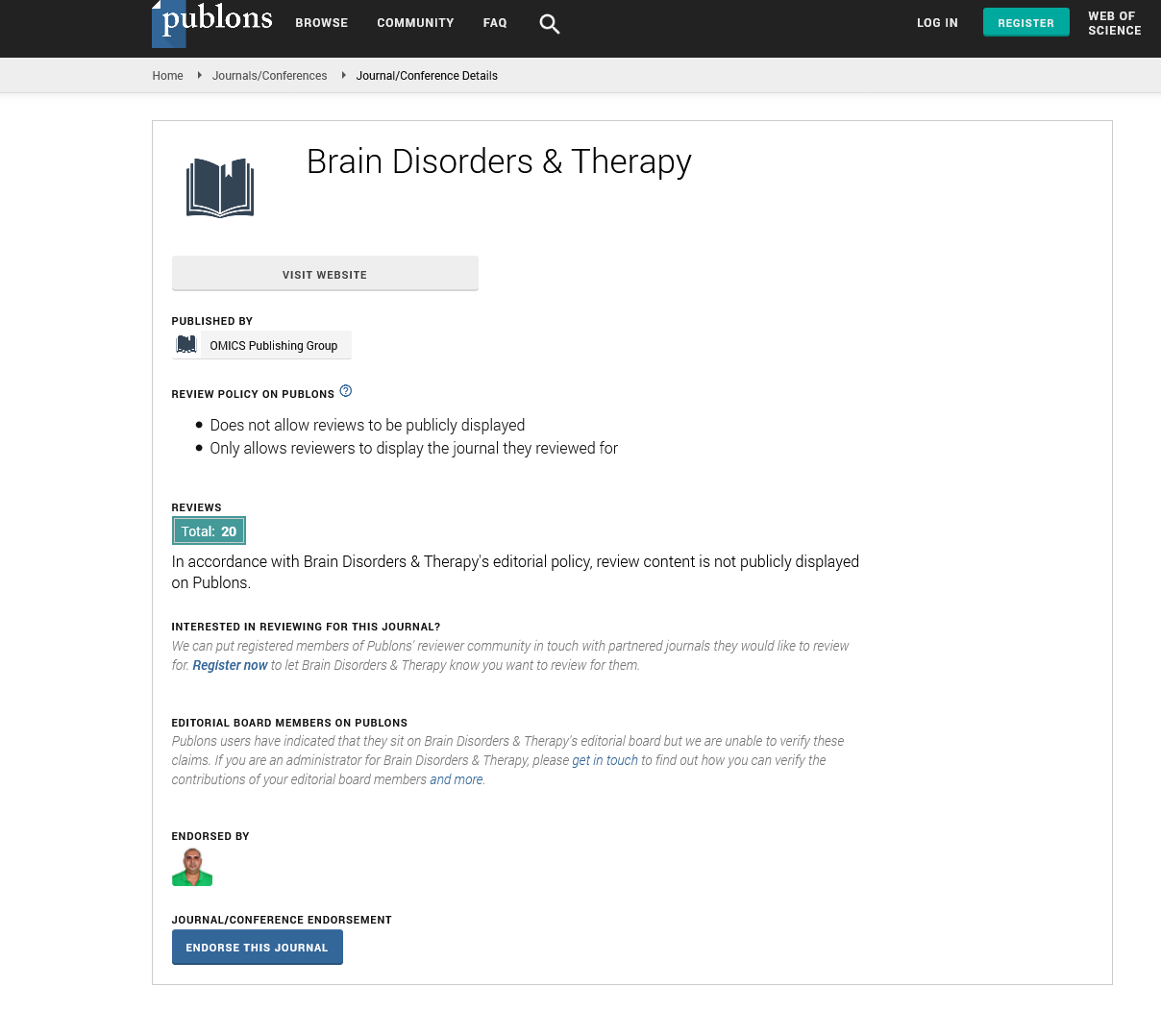PMC/PubMed Indexed Articles
Indexed In
- Open J Gate
- Genamics JournalSeek
- JournalTOCs
- RefSeek
- Hamdard University
- EBSCO A-Z
- OCLC- WorldCat
- Publons
- Geneva Foundation for Medical Education and Research
Useful Links
Share This Page
Journal Flyer

Open Access Journals
- Agri and Aquaculture
- Biochemistry
- Bioinformatics & Systems Biology
- Business & Management
- Chemistry
- Clinical Sciences
- Engineering
- Food & Nutrition
- General Science
- Genetics & Molecular Biology
- Immunology & Microbiology
- Medical Sciences
- Neuroscience & Psychology
- Nursing & Health Care
- Pharmaceutical Sciences
Subarachnoid hemorrhage: a life-threatening cause
7th International Conference on Neurological Disorders & Stroke
September 20-21, 2018 | Rome, Italy
Angela Ruban, Silvia Snider, Luigi Albano, Isabella Fermo and Pietro Mortini
Tel Aviv University, Israel
San Raffaele Hospital, Italy
Scientific Tracks Abstracts: Brain Disord Ther
Abstract:
Background: Subarachnoid hemorrhage (SAH) is a life-threatening condition. Cumulative morbidity and mortality following SAH remain high, despite the considerable efforts of neuroclinicians worldwide. Traditionally, rebleeding and cerebral vasospasm have been regarded as the main causes of poor outcome in these cases. Several lines of evidence suggest that glutamate (Glu) and aspartate (Asp) are involved in the secondary damage of SAH. Objective: The objective of this study is to analyze the pattern of Glu and Asp concentrations in cerebra-spinal fluid (CSF) of patients with SAH and their correlation with neurological status at admission and outcome. Methods: Fifty seven CSF samples were collected from 19 patients on days 1-3, 5-7 and 14 post-SAH. Concentrations of Glu and Asp amino acids were analyzed by liquid chromatography. Patients were neurologically evaluated at admission using Glasgow Coma Scale (GCS) and at discharge with Glasgow Outcome Scale (GOS) and modified Rankin Scale (mRS). Results: We found a significant correlation between CSF Glu and Asp levels at days 1-3 and GCS at admission (p???0.046). The Glu levels increased continuously in CSF up to day 14 (mean value at day 1-3 11.97±7.75, day 5-7 20.61±37.57, day 14 28.06±47.23). Moreover, we found a significant correlation between CSF Glu and Asp levels at 5-7 and 14 days post-SAH and mRS at discharge (p???0.0001, p???0.016, p???0.023 at day 1-3, 5-7 and 14 respectively). Conclusions: Molecular markers of early neurologic deterioration in SAH may play a role in monitoring of SAH progression and severity. SAH leads to a significant long-term increase of Glu and Asp amino acids in CSF. The patterns differ between good and poor outcome cases. We found that increased excitatory amino acids are strongly indicative of neurological status at admission and outcome.
Biography :
Angela Ruban pursued her PhD from Ben-Gurion University of the Negev and Postdoctoral studies from Weizmann Institute of Science, Turkey respectively. She is curently pursuing his career as an Independent Neurobiology Researcher at Tel Aviv University, with a specific expertise in understanding mechanism of glutamate excitotoxicity and therapeutic targeting of neurodegenerative and brain metastatic diseases.
E-mail: angellruban@tauex.tau.ac.il


